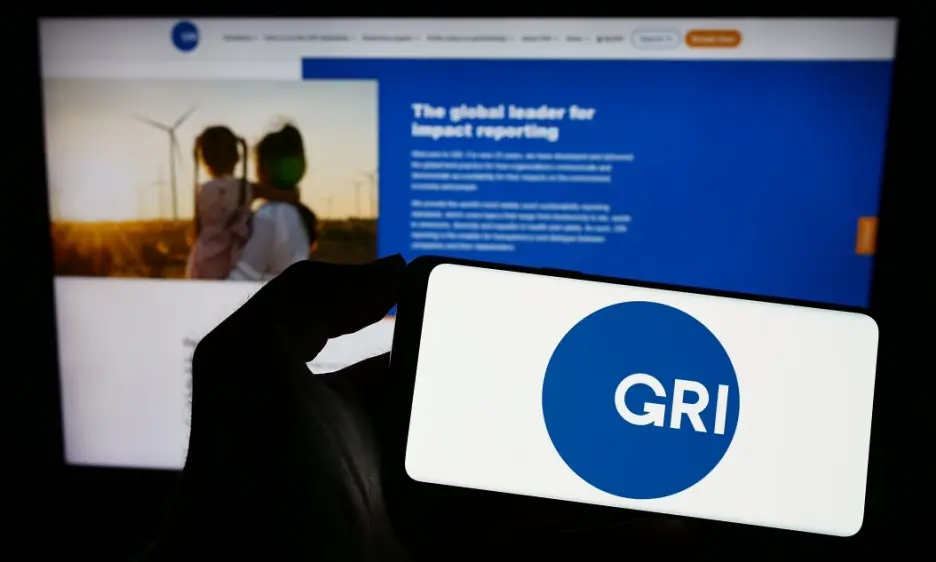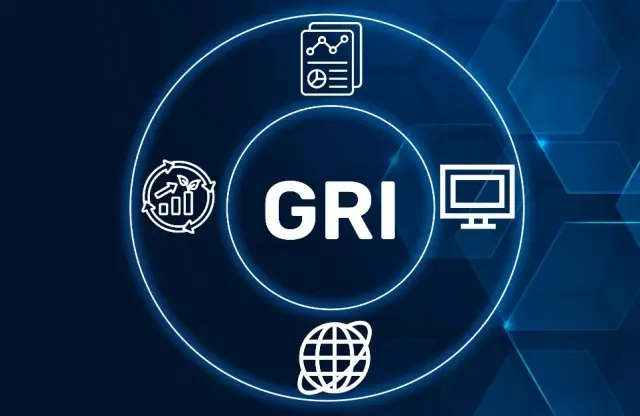Latest GRI Updates – What Companies Need to Know
 Share
Share
 Copy Url
Copy Url

GRI updates can feel like an unexpected pop quiz. Just when you think every disclosure is set, the Global Reporting Initiative refreshes the rulebook and tells the class to pay attention. The newest GRI standards revise what counts as material, tighten data boundaries, and test how well companies translate impact into numbers. They also widen the lens on how social issues feed into climate goals, making reports richer and more relatable.
These shifts matter because corporate sustainability reporting now drives investor trust, customer loyalty, and brand health. Under the refreshed sustainability standards, the reporting framework focuses on facts over fluff. Teams must show their path from raw data to clear insight and prove they listened through deeper stakeholder engagement before writing a single line. Regulators want proof, but readers want stories. Blend both by pairing charts with everyday examples that show real-world impact.
The significant changes also rewrite the playbook on governance, placing transparency center stage. Mastering GRI updates will turn compliance chores into chances to outshine peers. Early adopters often enjoy smoother investor conversations and stronger ESG ratings. That edge can open doors to fresh capital and brighter talent. Stick around as we break each tweak into plain English and share quick wins your team can use today.

GRI Basics and Their Global Impact
GRI updates often make headlines, yet the story began in 1997 when the Global Reporting Initiative set out to give non-financial data the same respect as profit figures. Today, the not-for-profit curates a widely used global framework that sets common sustainability reporting standards, helping organisations speak one language about impact. Its mission is simple: turn scattered numbers into insight that any reader can trust.
Unilever shows that mission in action. The consumer-goods giant sorts material topics such as water use and labour practices against the GRI standards, then shares an easy index that lets investors spot progress—or problems—at a glance.
How It Works
1. Universal Standards
These core rules lay down disclosure principles and quality tests for every reporter, anchoring consistent data so that figures, notes, and narrative stay in sync, ensuring standards are aligned across borders and sectors.
2. Sector Standards
Industry packs add sharper lenses. Mining, agriculture, and oil and gas now follow bespoke metrics that demand robust due diligence on emissions, water, and community impact, letting insider comparisons stay fair.
3. Topical Standards
Optional modules zoom in on issues like biodiversity, climate, and business and human rights, so companies only dive deep when the theme is relevant to their story.

Why Organisations Lean on the GRI
1. Trust Through Transparency
Clear, comparable data boosts trust. The benefits of sustainability reporting include smoother audits and fewer surprises, because readers can trace progress year after year with numbers that line up across brands and borders.
2. CSRD Compliance Made Easier
Europe raises the bar. Companies must report their impact under the Corporate Sustainability Reporting Directive (CSRD) and the European Sustainability Reporting Standards (ESRS) drafted by the European Financial Reporting Advisory Group (EFRAG). Starting with GRI makes that paperwork sprint feel more like a brisk walk.
3. Investor-Friendly Metrics
Global investors watch the International Sustainability Standards Board (ISSB). When your climate and governance metrics echo its playbook, analysts need less time to compare you with peers, so capital can move faster.
4. Benchmarking for Better Performance
Standardised data turns reports into league tables. Leaders see where they excel; laggards spot gaps before clients do. Healthy competition then drives everyone to raise the bar.
5. Strategy Backed by Data
Adopting the framework connects lofty goals to hard data. Finance, supply chain, and marketing share one dashboard, so sustainability shifts from side project to core strategy. It turns pledges into measurable milestones.
6. Early Risk Detection
Consistent reporting makes hidden risks visible. Early warnings on fines, resource shortages, or social backlash pop up before they blow budgets, letting managers act instead of react.
7. Culture of Accountability
Regular measurement lifts morale. Staff see targets, track wins, and believe the firm walks its talk. Over time, this builds loyal teams across departments, sparks fresh ideas, and improves retention.
8. Better Access to Capital
Banks and insurers favour transparency. A solid GRI report can trim loan margins or unlock green bonds because risk officers spend less time guessing your footprint.
Staying alert to GRI updates keeps each of these upsides firmly within reach.

Headline Changes in the Latest GRI Updates
The sustainability rulebook never stays still. Fresh GRI updates have landed, reshaping how firms prove their social and environmental impact. The updated GRI framework tightens the screws on clarity, comparability, and accountability—yet keeps the reporting journey manageable for teams of every size.
Universal Standards at a Glance
The 2021 overhaul replaced GRI 101-103 with three new pillars - GRI 1, 2, and 3 - now in effect from 1 January 2023. The revised GRI standards ask reporters to determine material topics through a sharper lens, weave stakeholder engagement into every disclosure, and show a live due diligence process on human rights and the supply chain. Clear signposts on corporate governance mean readers no longer hunt for decision-making details. In short, old guidance pages became concise clauses; new language makes reports easier to compare. Miss the upgrade, and regulators may flag your filing as “incomplete.”
Sector Standards: Who Must Follow Them?
Industry rule-sets now roll out in waves. Oil & Gas leads, applying from 1 January 2023; Agriculture, Aquaculture & Fishing follows from 1 January 2024; Coal joins the roster the same day; Mining steps up for reports covering 2025 onward. These blueprints align with EU expectations and slot neatly beside India’s BRSR framework and BRSR Core, giving multinationals one playbook across borders. Sector metrics dive deeper on water, tailings, and land rights, letting companies benchmark peers and answer tough investor questions without guesswork.
New Topical Guidance Worth Noting
Fresh drafts tackle biodiversity, climate, and human rights gaps. The Biodiversity Standard closed public consultation in early 2023; Climate Change and Energy drafts ran to February 2024; a human-rights refresh is in progress. Each module slots into the wider framework for corporate sustainability reporting and speaks the same language as other emerging regulatory demands, from ISSB prototypes to national climate laws. Optional today, they are likely to become must-haves tomorrow, so early adoption keeps a company ahead of the curve.
Timeline for Adoption
- Universal Standards: mandatory for all reports beginning 1 Jan 2023.
- Oil & Gas Sector Standard: effective 1 Jan 2023.
- Agriculture, Aquaculture & Fishing: effective 1 Jan 2024.
- Coal Sector: effective 1 Jan 2024.
- Mining Sector: reporting expected from 2025.
Stick to these milestones, and your disclosures stay in accordance with the latest rules. Ignore them, and late-night edits—or worse, fines—may follow. Smart teams track GRI updates early, bake changes into planning cycles, and enjoy smoother reviews under every watchdog’s eye.

Practical Steps to Comply and Thrive
Keeping pace with GRI updates can feel like chasing a moving train, yet the ride is worth it. The freshest rules add clearer checkpoints, letting companies prove impact without guesswork and still satisfy regulators worldwide.
Step‑by‑Step Compliance Checklist
1. Gap analysis
Blend materiality and due diligence. Compare every policy to the revised criteria, flag shortfalls, and rank them by risk. This quick snapshot guides budgets long before drafting begins.
2. Stakeholder mapping
Chart voices that feel your footprint—workers, suppliers, neighbours, investors. Log their priorities and the actual and potential negative impacts they note. Anchoring targets in real life keeps reports honest and useful.
3. Data collection
Harvest evidence with audit‑proof trails, because minimum reporting requires numbers that reviewers can trace straight back to source systems. Reliable data saves painful rework later.
4. Draft
Turn findings into plain words and clear tables that mirror the global framework for corporate sustainability. Show what changed and why it matters so readers move from data to insight in one hop.
5. Review
Invite fresh eyes to test the story against the diligence guidance for responsible business. Early feedback from auditors or NGOs spots blind spots and shields reputations.
6. Publish
Release on time, tag mandatory disclosures online, and keep a version‑controlled log ready for next year’s questions. Transparency today makes tomorrow’s update easier.
Forming Your In‑House Reporting Squad
Even a lean firm can field a squad for the new GRI standards. The sustainability lead sets goals, analysts collect data, writers craft the story, and IT runs a secure portal. Shared taxonomies, version‑control tools, and short online courses keep everyone aligned and confident.
Benefits Beyond Compliance
1. Stronger Brand Trust
Clear numbers show humble progress. Customers see the journey, not just the claim, so loyalty survives occasional bumps.
2. Smoother Investor Talks
Aligning with the EU corporate sustainability reporting directive gives analysts tidy charts, trims briefing time, and often shortens the road to capital.
3. Easier ESG Ratings
Ratings firms fold data into plans for enterprise value standards. A tight file feeds those models quickly, nudging scores upward and widening index doors.
4. Better Risk Management
Disclosures mean teams must use the applicable protocols when red flags flare, stopping small issues from snowballing into costly crises.
5. Enhanced Employee Engagement
Staff watch targets, log wins, and feel the firm walk its talk. Pride lifts retention and sparks fresh ideas.
6. Access to Sustainable Finance
Banks and insurers offer greener terms when they no longer guess footprints, unlocking cheaper loans and broader bond markets.
When to Call an External Expert
When deadlines loom or data hides in ten spreadsheets, outside help turns chaos into clarity. Our sustainability team knows GRI updates inside out. With clever software, we spot gaps in hours and align disclosures with SASB, ISSB, and BRSR. You’ll see quicker delivery, reports in many languages, and assurance that keeps the board and auditors relaxed.

Report Yak Simplifies the Latest GRI Updates for You
The latest GRI updates do more than shuffle paragraph numbers; they reshape the story companies tell the world. 2021’s revised approach to materiality sharpens focus on risk and opportunity. 2024’s Biodiversity Standard adds new disclosures on nature loss, value‑chain hotspots, and human‑rights links.
These changes weave global governance principles into every metric and align reports with the UN SDGs. They also set clear minimum reporting requirements for climate, labour, and community impacts. Transparent numbers now sway ratings, shape supply contracts, and cushion impacts on the economy when crises strike.
Happily, you’re not alone on this journey. Our design studio turns dense standards into visually crisp narratives, backed by step‑by‑step guidance that walks boards from gap analysis to polished proof. We’ve delivered LACP award‑winning reports three years running, each a testament to craft, rigour, and on‑time delivery. Ready to translate regulations into reader‑friendly stories and win investor trust? Speak to our report‑design experts today. View our showcase of prize‑winning work, then reach out on 1800 121 5955 (India), email: contact@reportyak.com, WhatsApp, or through our Contact form. Let’s turn compliance into competitive sparkle before the next wave of GRI updates arrives.
Related Posts
-
How To Adopt BRSR Guidelines For Success
Oct 15, 2025Share
Copy Url
Simplifying ESG Disclosure for Better Impact
corporate reportingenvironmental and social initiatives
+6
Aug 28, 2025Share
Copy Url
GRI Sustainability Taxonomy: Learn How to Turn Data Into Advantage
corporate governancecorporate reporting
+11
Jul 1, 2025Share
Copy Url


